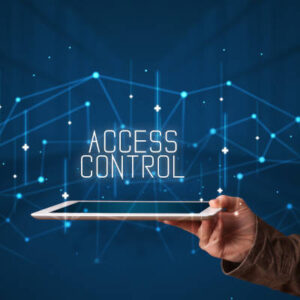Properly Assigning Access Control Measures Doesn’t Have to Be Difficult

Unless you run a business in which each and every employee is responsible for identical tasks, you are going to encounter the need for variable permissions among your staff so that your data can be better protected. One effective means of enforcing these permissions is through an access management policy. Let’s review a few components you should include in such a policy.
Permissions, Dictated by Roles
Consider the different responsibilities that different departments and positions within your business will be tasked with. Naturally, not everyone will need equal access to the same data, so why should you leave the possibility of data loss (intentional or accidental) open? Furthermore, why allow your employees to be tempted by unregulated access to sensitive data?
A role-based access management solution can help eliminate these challenges, without micromanaging each employee’s permissions. Instead of selecting permissions that apply to each employee, individually, you can create groups that enable access to roles that these employees fill. That way, editing these permissions becomes a much simpler task, and largely eliminates the chances of making a mistake in the process.
Only Providing Necessary Permissions
While on the subject of access control, you also need to really consider the extent of some of your users’ permissions–especially as far as interactions among different departments is concerned. While all managers are technically authority figures, and departments can share data needs, there are times that some data simply doesn’t need to be touched by certain users.
While you don’t want to give your users excessive access to data, it also wouldn’t help to excessively restrict their access. This is why you need to find the balance between the two options, and make use of the different options many of these solutions provide, like temporary permissions and the like.
Reinforcing Defenses with Multi-Factor Authentication
In a perfect world (that for some reason still required security measures), passwords would be more than sufficient to prevent unauthorized access to an account. Sadly, cybercriminals still cause authentication to be a necessity, and possess the tools and resources to break past many of the passwords that business users will use, especially since these passwords aren’t often in line with best practices anyway. Dictionary words, number patterns, and other simple password tricks are commonly used to the disadvantage of an organization’s overall data security.
This is far from a new phenomenon. For 20 years during the Cold War era, the password for the entirety of the United States’ nuclear arsenal was the terrifyingly-simple “00000000.”
If nuclear bombs were once protected by this code, how likely do you think it is that your employees would resort to something similar?
While you should always encourage your users to come up with the most secure passwords possible, another effective approach comes in the form of using Two-Factor (or Multi-Factor) Authentication. Rather than allowing access once a password has been confirmed, 2FA/MFA demands an additional authentication method that tends to be more secure than the normal means, such as an additional code generated by an application, or perhaps a biometric indicator.
By putting methods like these to work for your success, you can ensure that your data is well-managed and secure, without unduly inconveniencing your workforce.
Reciprocal Technologies can help you put these methods into practice. Learn more by reaching out to us at 317-759-3972.
About the Author
Author’s recent posts
Download the
Business Owner’s Cybersecurity Blueprint


